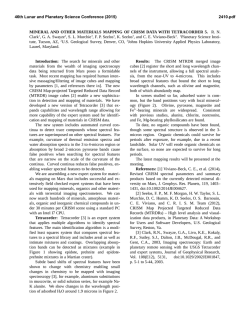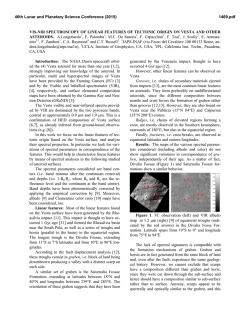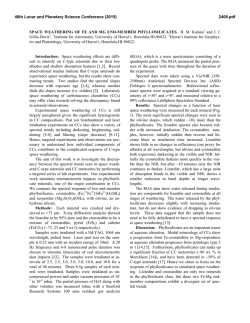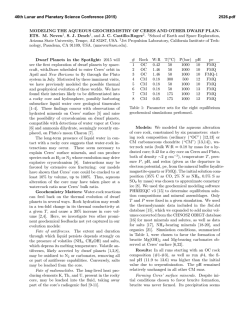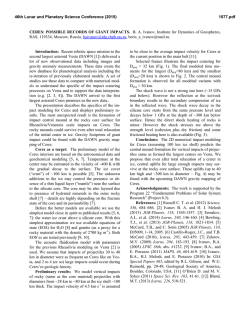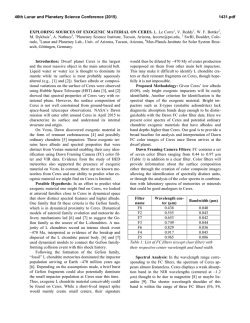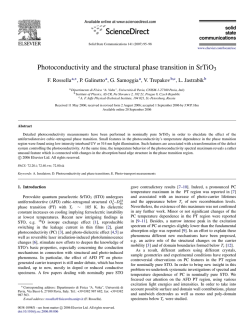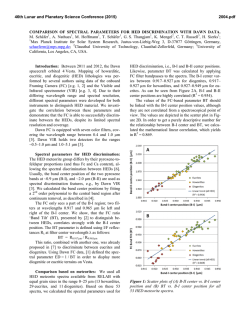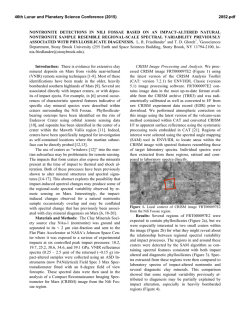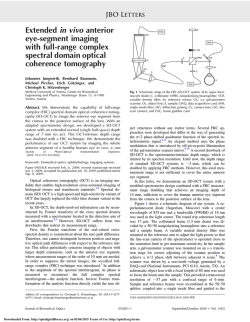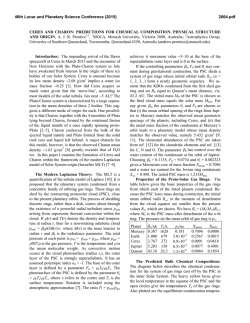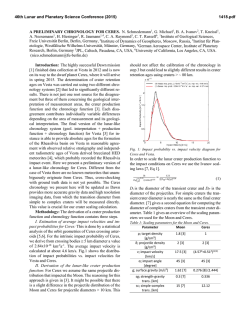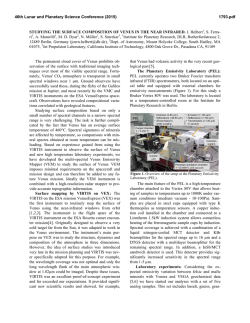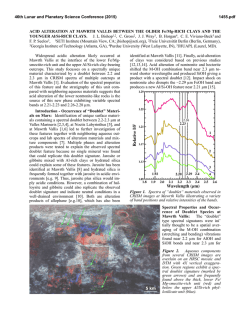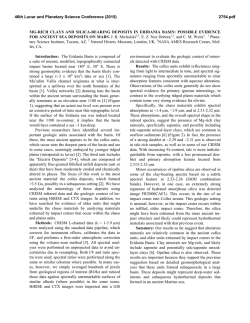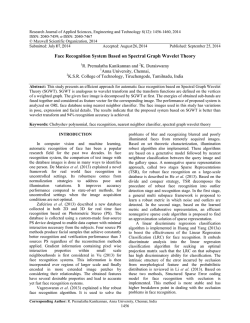
Identification of Homogeneous Units on Ceres. First Results by Dawn
46th Lunar and Planetary Science Conference (2015) 1365.pdf IDENTIFICATION OF HOMOGENEOUS UNITS ON CERES. FIRST RESULTS BY DAWN. F. Zambon1, M.C. De Sanctis1, F. Tosi1, A. Longobardo1, E. Palomba1, F. Capaccioni1, E. Ammannito2, A. Frigeri1, M. T. Capria1, M. Ciarniello1, A. Raponi1, C. T. Russell2 and C. A. Raymond3, and the Dawn/VIR Team. 1 INAF-IAPS, V ia del Fosso del Cavaliere 100, I-00133 Rome, Italy, [email protected]. 2University of California at Los Angeles, Los Angeles, CA, USA. 3NASA/Jet Propulsion Laboratory and California Institute of Technology, Pasadena, CA, USA. Introduction: The dwarf planet Ceres, the largest object in the main asteroid belt of the Solar System, is the second and final target of the NASA Dawn mission [1]. In spring 2015, i.e. 2.5 years after leaving its first target, asteroid 4 Vesta, Dawn will arrive at Ceres providing spatially resolved data up to resolutions never achieved before. VIR, the hyperspectral imaging spectrometer onboard Dawn, with a spectral range 0.25-5.1 µm will allow the first comprehensive mapping of Ceres mineralogy, highliting the possible presence of ice, organics and volatiles [2]. The few spectra of Ceres available show an absorption feature in the 3-µm region, which might reveal the presence of hydrated minerals [4]. Previous UV-VIS maps obtained from Hubble data [5] revealed broadly regional albedo differences on Ceres (Figure 1). Already in the early Approach phase, Dawn will gather data at an unprecedented spatial resultion, covering a much larger spectral range at the same time, ultimately allowing for determine the first global spectral characteristics of the dwarf planet. Here we highlight homogeneous spectral regions by means of classification techniques. istics. We apply an unsupervised clustering method, such as ISODATA or k-means [6]. Such clustering algorithms group pixels with similar characteristics. With this approach, we can automatically extract spectral endmembers that can drive the classification of the remaining dataset. To achieve this goal, we use the spectral angle mapper (SAM) supervised method. SAM compares every single spectrum in the dataset with the spectral endmembers, to determine their degree of similarity by computing a "spectral angle" between them [7]. SAM calculates the angle between two spectra which are considered as vectors in a space with dimensionality equal to the number of spectral channels [7, 8]. The analysis is also useful to verify if spectral differences are associated to areas with different albedo and to select regions of interest for local analysis when higher resolution data will be available. Figure 1: RGB image of the Ceres albedo deviation. R: 535 nm, G: 335 nm, B: 223 nm. References [1] Russell, C.T. et al., Science, 336, 684, 2012. [2] De Sanctis, M.C. et al., LPSC, 2015 [3] Lebofsky, L.A., Mon. Not. R. Astron. Soc. 182, 1978 [4] Lebofsky, L.A., et al.:, Icarus, 1981 [5] Li, J.Y. et al., Icarus, 2006 [6] Adams, J. B. and Gillespie, A. R., Cambridge University Press, 2006. [7] http : //www.ltid.inpe.br/tutorial/tut9.htm#Spectral %20Angle%20Mapper%20Classification. [8] Rashmi, S. et al., IJISET, 2014 Data set and analysis: The global albedo map obtained by Hubble data [5] has a spatial resolution of ~30 km/pixel. This map available for three different wavelength in the UV-VIS range (i.e. 223 nm, 335 nm and 535 nm) (Figure 1) highlights different albedo region, which might point to compositional gradients [5]. During the early Approach phase to Ceres, VIR will acquire data with a spatial resolution up to 12.5 km/pixel, i.e. more than twice as high as the best obtained so far. This data allow to perform a global spectral analysis of Ceres and to combine the spatial information to the spectral information. Since we do not have a priori information on the different spectral units, classification of these data is a good approach to identify regions with homogeneous spectral character- Acknowledgments VIR is funded by the Italian Space Agency–ASI and was developed under the leadership of INAF-Istituto di Astrofisica e Planetologia Spaziale, Rome-Italy. The instrument was built by SelexGalileo, Florence-Italy. The authors acknowledge the support of the Dawn Science, Instrument, and Operations Teams. This work was supported by ASI and NASA’s. A portion of this work was performed at the JPL NASA.
© Copyright 2025
